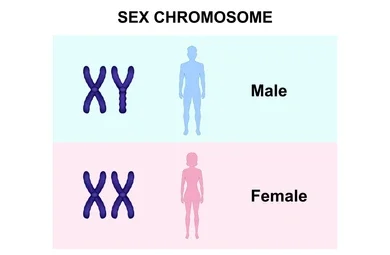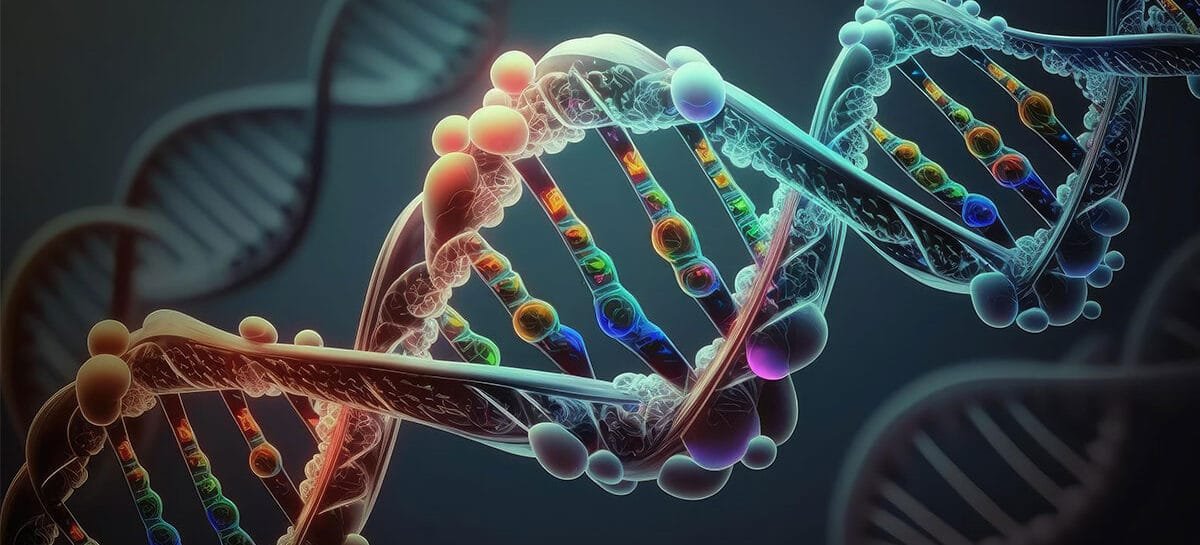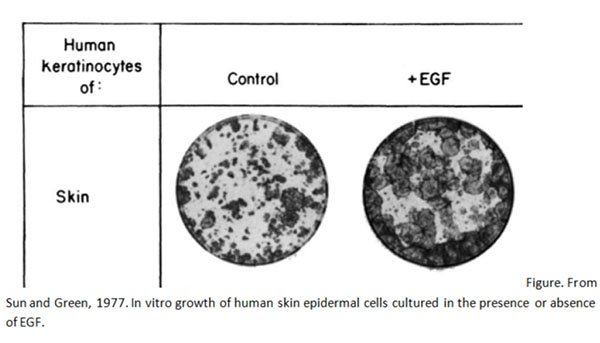Welcome to one of our most comprehensive guides on genetic hair loss! If you’re here, you’re likely seeking deeper understanding about your hair loss journey, and we’re thrilled to help you uncover the genetic mysteries behind it. Understanding male pattern baldness inheritance, X chromosome hair loss genes, and family history patterns can seem overwhelming, but we’ll break it down together in a way that makes sense.
We know how frustrating it can be to see changes in your hair while trying to understand if it’s coming from your mother’s or father’s side. Before diving deeper, we highly recommend checking out our foundational guide “Fighting Hair Loss: The First Step is Education, Not Product Purchases” to understand how genetics fits into the bigger picture of hair health.
Is Hair Loss Inherited from Mother or Father?
The inheritance pattern of hair loss is actually more complex than the old wives’ tale about it coming from your mother’s side. Hair loss genetics involves multiple genes from both parents, with the primary gene being the AR (Androgen Receptor) gene on the X chromosome.
Is Hair Loss Recessive or Dominant?
Hair loss inheritance follows a complex pattern called “polygenic inheritance with variable expressivity.” This means:
| Inheritance Type | Characteristics | Expression Rate |
|---|---|---|
| Autosomal Dominant | Primary inheritance pattern | 50% chance per child |
| Variable Penetrance | Not everyone with genes shows symptoms | 80% males, 40% females |
| Polygenic | Multiple genes involved | Varies by combination |
The condition shows what geneticists call “androgen dependency,” meaning:
- The AR gene on the X chromosome is the primary driver
- Multiple modifier genes (EDA2R, PAX1, HDAC9) influence severity
- Environmental factors can trigger or suppress genetic expression
- Hormonal sensitivity varies among different scalp regions
For example, if you inherit specific variants of both the AR gene and EDA2R gene, your risk of developing male pattern baldness increases by up to 700%. However, without certain hormonal triggers, these genes might remain dormant.
What Genes Are Inherited from Mother Only?
- X chromosome genes
- Mitochondrial DNA
- AR gene variants affecting DHT sensitivity
What Genes Are Inherited from Father Only?
- Y chromosome genes
- SRY gene affecting hormone production
- Paternal imprinted genes

Who Determines If You Lose Your Hair?
Your hair loss risk is determined by a combination of:
| Genetic Factor | Contribution Percentage |
|---|---|
| Maternal Genes | 40-50% |
| Paternal Genes | 40-50% |
| Environmental | 10-20% |
Is Genetic Hair Loss Permanent?
While genetic hair loss has traditionally been viewed as permanent, modern science offers hope through various management strategies and treatments. Genetic hair loss occurs when DHT binds to receptors in hair follicles, leading to their miniaturization over time. This process is influenced by your genetic predisposition to hormone sensitivity, particularly in the scalp area. The image shows how DHT acts as the primary hormone linked to hair thinning, binding to receptors in hair follicles and causing progressive miniaturization.
Management and Prevention Strategies
Research and management strategies have evolved significantly over the decades. Modern approaches focus on:
Early Intervention
- Identifying hair loss patterns before significant thinning
- Starting treatment during the miniaturization phase
- Regular monitoring of hormone levels
- Professional assessment of genetic factors
Long-term Solutions
- Hormone level management through medical supervision
- Lifestyle modifications to support hair health
- Combination treatments targeting both genetics and hormones
- Regular assessment and adjustment of treatment plans
While you can’t change your genetic makeup, you can effectively manage its expression through these scientifically-backed approaches. The key is understanding that genetic hair loss is a manageable condition when addressed with appropriate strategies and consistent care.
At What Age Does Balding Start?
The onset of genetic hair loss typically follows this pattern:
- Early onset: Ages 20-25
- Common onset: Ages 25-35
- Late onset: After age 35
Genetic Markers and Early Detection
![]()
Modern genetic testing can identify several key markers:
- EDA2R gene variations: The EDA2R gene sits on the X chromosome and controls how sensitive your hair follicles are to androgens. When this gene has variations, your scalp becomes more reactive to hormones like DHT, which can lead to thinning hair. This explains why some people inherit hair loss patterns from their mom’s side.
- HDAC9 gene expressions: HDAC9 is like a timer for your hair growth cycles. When this gene isn’t working properly, it can make your hair’s growth phase too short. Think of it as a clock that runs too fast, making your hair spend less time growing and more time resting. Research shows that changes in this gene often show up in people who start losing hair early.
- APCDD1 gene mutations:The APCDD1 gene works with something called the Wnt pathway, which tells your hair follicles to grow hair. When this gene has mutations, it’s like turning down the volume on these growth signals. What makes this gene interesting is that it affects both men and women the same way – unlike some other hair loss genes that mainly affect one gender.
Treatment Response Prediction
Different genetic profiles respond differently to treatments:
- 5-alpha reductase inhibitor response
- Androgen receptor sensitivity
- Growth factor therapy effectiveness
5-Alpha Reductase Inhibitor Response
Understanding how your body responds to 5-alpha reductase inhibitors can save time and money in your treatment journey. These medications work by blocking DHT production.

When and Where to Get Tested
- Visit an endocrinologist or dermatologist specializing in hair loss
- Request a DHT sensitivity test before starting treatment
- Ideal timing: Early stages of hair loss
- Cost-saving tip: Many clinics offer first-time consultation discounts
- Look for teaching hospitals that often charge less for comprehensive testing
Androgen Receptor Sensitivity
Your androgen receptor sensitivity determines how your follicles react to hormones like testosterone and DHT.
Here’s how it works:When you have higher sensitivity in your androgen receptors, your hair follicles react more strongly to even normal levels of hormones like testosterone and DHT. Think of it as having extra-sensitive locks that open too easily, leading to:
- Faster follicle miniaturization
- Earlier onset of hair thinning
- More aggressive pattern hair loss
- Varying responses in different scalp areas
Your sensitivity level depends on your genetic makeup, particularly variations in the AR gene. This explains why two people with the same hormone levels might have very different hair loss patterns – one person’s receptors might be more “sensitive” than another’s.
To understand your personal sensitivity:
- Get genetic testing for AR gene variations
- Monitor DHT levels through blood work
- Track pattern and progression of hair changes
- Consider scalp biopsy to assess follicle health
Remember, higher sensitivity doesn’t mean inevitable hair loss – it just means you need a more targeted treatment approach focused on both hormone levels and receptor response.
Testing and Monitoring
- Genetic testing for AR gene variations
- Blood hormone panel including free and total testosterone
- Regular monitoring every 3-6 months
- Money-saving tip: Bundle tests together at specialized hair loss clinics
- Consider telemedicine consultations for follow-ups to save on visit costs
Growth Factor Therapy Response
Growth factor treatments work differently for each genetic profile, making testing essential before investing in expensive treatments.
Assessment Protocol
-
Scalp biopsy to evaluate follicle health
-
Maximizing Your Treatment with Scalp Massage
Now that you understand the genetic factors affecting your hair loss, let’s talk about maximizing your treatment’s effectiveness. The perfect companion to your chosen hair products is a quality scalp massager. These innovative tools not only help combat genetic predisposition to hair loss through improved circulation but also ensure your treatments reach deep into the scalp where they’re needed most.
-
The Power of Proper Application
Ready to take your hair care routine to the next level? Our comprehensive guide “Hair Scalp Massager” reviews the best tools for every need – from electronic versions with multiple settings to simple manual options. What makes these tools special is their ability to deliver products directly to your hair follicles without messy hands or lingering oil residue. The standout among these is the jade massager, which combines traditional healing properties with modern design. Jade’s naturally cool surface helps reduce inflammation while promoting blood flow, making it particularly effective for those dealing with genetic hair loss patterns.
-
-
Growth factor receptor testing
- Growth factor receptor testing analyzes the presence and functionality of specific receptors on hair follicles that respond to growth factors like:
- Epidermal Growth Factor (EGF)
- Growth factor receptor testing analyzes the presence and functionality of specific receptors on hair follicles that respond to growth factors like:

- Fibroblast Growth Factor (FGF)
- Vascular Endothelial Growth Factor (VEGF)
-
Platelet-rich plasma (PRP) compatibility testing
- PRP compatibility testing is a specialized diagnostic procedure that evaluates how well your body might respond to platelet-rich plasma treatment for hair loss. Here’s what you need to know:
Testing Process
- Blood sample collection and analysis
- Evaluation of platelet concentration capabilities
- Assessment of growth factor production levels
- Testing of platelet activation response
Clinical Benefits
- Predicts treatment effectiveness before investing in full PRP therapy
- Helps determine optimal platelet concentration for your specific case
- Identifies any potential complications or contraindications
- Allows for customized treatment protocols
What’s Measured
- Platelet count and viability
- Growth factor production capacity
- Healing protein levels
- Cellular response patterns
- PRP compatibility testing is a specialized diagnostic procedure that evaluates how well your body might respond to platelet-rich plasma treatment for hair loss. Here’s what you need to know:
-
Cost-effective approach: Start with basic blood work before specialized tests
Yes, starting with basic blood work before moving to specialized tests is a cost-effective approach for several reasons:

Basic Blood Work First
A standard hormone panel typically costs $100-200 and includes:
- DHT levels
- Testosterone levels
- Thyroid function
- Basic metabolic panel
Cost Savings
- Basic panels are usually covered by insurance
- Helps identify obvious issues before investing in expensive specialized testing
- May reveal sufficient information for initial treatment
Clinical Benefits
- Provides baseline measurements
- Rules out common hormonal imbalances
- Guides whether specialized testing is actually needed
- Helps doctors determine next steps
Personalized Treatment Pathways
We’ve found that understanding your genetic profile helps determine the most effective treatment approach. Our comprehensive guide on treatment options provides detailed information about how different genetic patterns respond to various interventions. Many of our community members have successfully managed their genetic hair loss through early intervention and personalized treatment plans. Let’s continue exploring your options together, using science-backed approaches to maintain and improve your hair health.
We understand you’re looking for real answers about your hair health, and that’s exactly why we’ve created an educational journey rather than just pushing products. Everyone’s hair loss story is unique – whether it’s influenced by genetics, diet, lifestyle choices, blood circulation, or vitamin deficiencies. To help you understand your specific situation better, we recommend starting with our comprehensive guide Fighting Hair Loss: The First Step is Education, Not Product Purchases. This foundational guide will help you:
- Identify the root cause of your hair concerns
- Understand how different factors interact
- Learn which tests might be most relevant for your case
- Discover science-backed solutions that match your needs
Remember, understanding why your hair is changing is the first step to effectively addressing it. Our community of readers has found that taking this educational approach leads to better, more lasting results than jumping straight into treatments without proper knowledge.
[…] this connection is crucial for your journey towards healthier hair. Just as we’ve explored genetic factors and hormonal influences in our previous discussions, scalp tension is really dangerous in hair […]